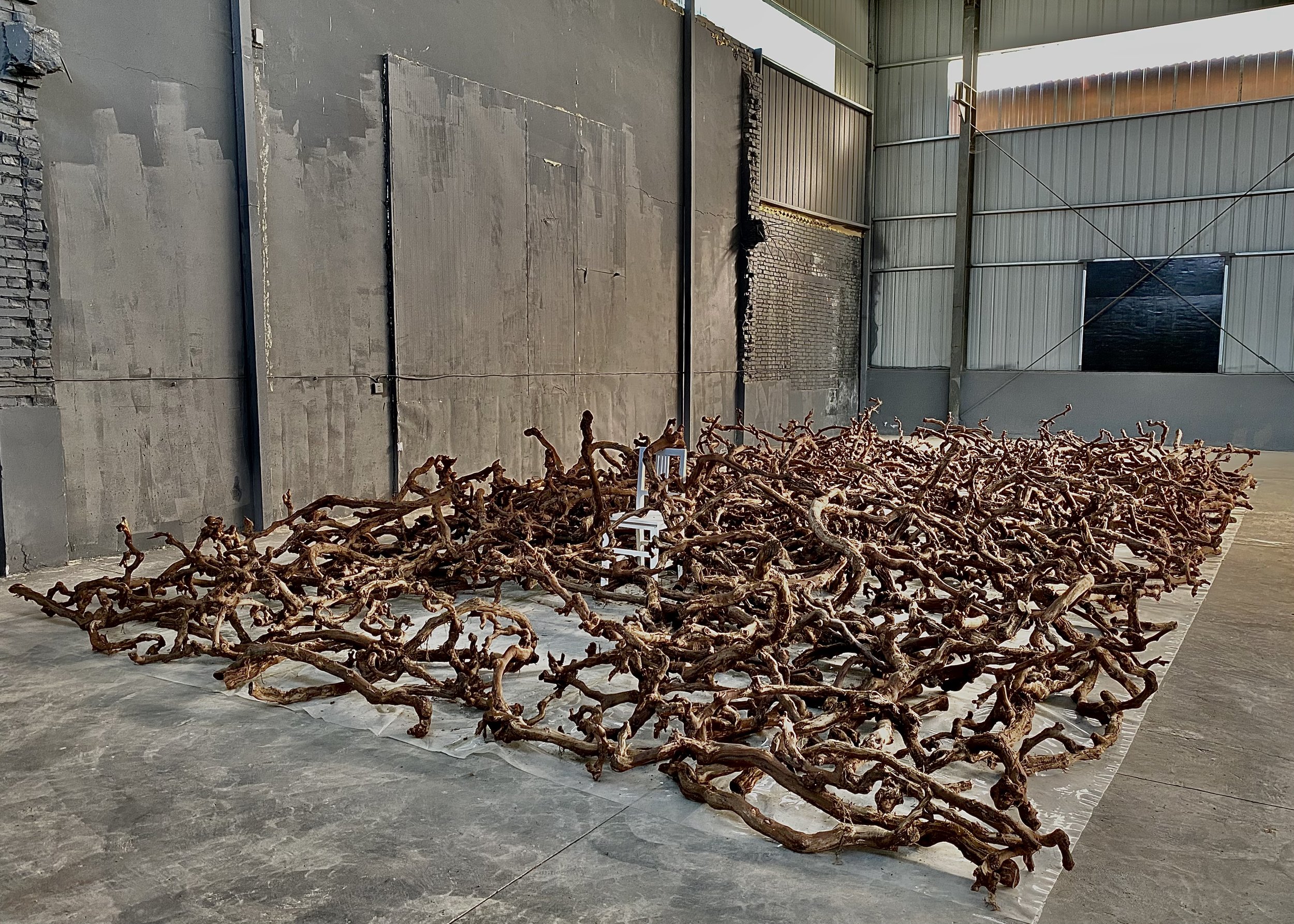
"The First Emperor of Qin Is Not a Mountain" (chapter 2/3)

When one lives through the harsh winter of the Qin Mountains, nature and one’s mind constantly intertwin and become each other's matter. With the Qin Mountains as his studio and object, YoO’s long-lasting portrait-making process never ceases. Amidst the subtle changes in climate, the Mountains reveal their stably varied looks in the artist's unique "media pathways": The massifs make their statement through the natural materials of wood, soil, straw and the texture of mineral pigments, fabrics and other artifacts. The colors tend to break out from the snowy mountain range. The sketched mountain forms differ no longer depending on the relocation of vision, but on the artist’s mental state when looking at the mountains. Similar to those creators in art history who use portraits to capture human emotions, YoO continues painting and sculpting in the midst of change, entrusting his time to his object (the range), until the volatility of environment is weakened by the consistent act of pure depiction, ultimately concluded as a realization of the self. In this sense, the portrait of a mountain is the portrait of a human being, and to look at a mountain is to look inward.
Within yet detached, gentle yet sinuous, this continuous physical and spiritual co-presence of humans and nature transcends the logos. Living with the Qin Mountains is like a practice and a journey. Due to the concentrated release of inner potential in art practice, the diversity of life experiences is bridged in seemingly singular actions, implicating samples of one’s relationship with society, history, and his own kind. The evolutions of society and natural history are inevitably relevant, while each event independently exists. In this order, “The First Emperor of Qin Is Not a Mountain” (2/3) testifies to the circulation of the human spirit, and also preludes the termination of the trilogy, which narrates the change of society and self through nature.








